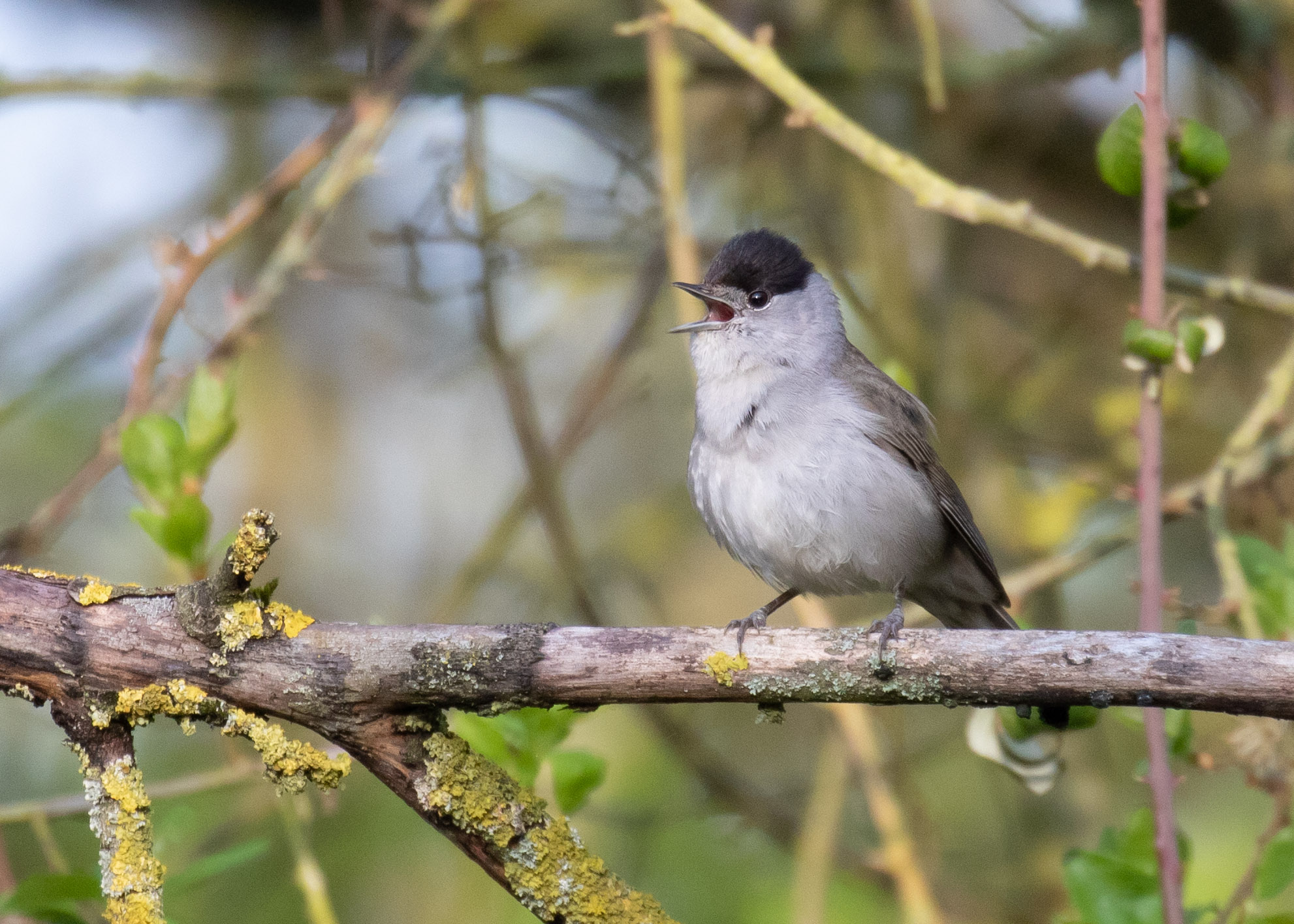In late March I began regularly visiting Warneford Meadow and Lye Valley to record the birds that I found there. The habitat is described here, but in essence, two small streams pass either side of the Churchill Hospital and form a “Y”-shaped green corridor that adjoins to Southfield Golf Course.
Between late March and late May, a total of 59 species of birds were recorded. This is a decent total for a city site that is not a large waterbody. Of course, not every bird present during this spring will have been recorded. My visits were generally early morning, which tends to reduce the chance of seeing some species, for example soaring raptors who depend on thermals. No scarce migrant passerines were recorded (for example, Wheatear, Redstart, Ring Ouzel) but all are possible.

The first surprise came on one of my very first visits when I found a pair of Red-legged Partridge on the golf course very early one morning. There cannot have been many partridge records from Oxford city itself. I heard one calling a few days later, but have not recorded this species since.
In terms of waterbirds, there was only the occasional fly-over Canada Goose flock to add to the local Mallards and Moorhens, both of which bred:


Grey Heron was recorded a couple of times in April, including one bird in the small pools in the Lye Valley:

Raptors recorded included Kestrel, which is a local breeder:

There was the occasional Sparrowhawk record, mainly from the golf course area:

Red Kites are an abundant species in Oxford and frequently soar over the area. Some birds may roost in the taller trees in the site:


On one occasion I disturbed a roosting Buzzard:

However, raptor of the spring was a fabulous Hobby which flashed over the Golf Course on 18th May, apparently hunting Swifts. Corvid records included Jay, Magpie and Jackdaw, all of whom breed. The exceptional corvid record was a Rook, passing over on 12th April. Hirundines were only represented by two Swallow records: one on 22nd April and one on 2nd May (per Dave Lowe). The first Swift was seen on 18th May, House Martin has yet to be recorded this year!
Great Spotted and Green Woodpeckers are both local breeders:

The four common Tit species all breed locally.



Coal Tit is the least frequently encountered of the Tit species, but did breed in Boundary Brook valley:


Five warbler species were recorded this spring (to date). Blackcap was the most abundant, with up to 15 singing males in late April:

Chiffchaff was also recorded on every visit, with at least three singing males and one confirmed breeding pair:

There were only two Willow Warbler records in April, both singing birds that moved through:

I was pleasantly surprised to find a number of Whitethroat territories so deep in the city. The first bird was recorded on 20th April. Up to three singing males set up territories, but have recently stopped singing, so time will tell if they managed to attract a mate and breed:

The best trans-Saharan migrant recorded in the area was Lesser Whitethroat. A singing male was in a tiny garden in the housing estate behind the Lye Valley on 29th April. Another male was heard on the Golf Course in early May.

This housing estate has a decent population of House Sparrows and Starlings, by modern standards. They no doubt benefit from the supply of insects and invertebrates in the nature reserve, which has SSSI status.


The final Siskins were seen on 3rd April…

… whilst the first Reed Bunting returned on 7th May:

Bird of the spring goes to a bird that I did not see, a Little Egret, photographed by Judy Webb on 9th May in the Lye Valley. I look forward to catching up with this species here, hopefully soon!

I used eBird to record my bird records, an illustrated summary of which can be seen here. Anyone (with a free eBird account) can contribute further sightings at the site, now that it is an eBird hotspot. 57 of the species were recorded by myself. Dave Lowe added one further species during his BTO Breeding Bird Survey at the site and Judy Webb contributed the final species, Little Egret.
Other wildlife recorded this spring:
Muntjac Deer were seen on virtually every visit, as were Rabbit and Grey Squirrel. There are signs of Badger too, though I have yet to see any animals. Occasionally I see Red Fox. This adult appeared as I was lining up a picture of the Muntjac behind it:

I have no expertise of insects or butterflies, plus the early morning nature of my visits means that there is little if any, butterfly activity at dawn. However, some species stand out:



Coming soon: my experience of using eBird and some analysis of the data using bird records from the Lye Valley.

I’ve seen badgers just off Barracks Lane, I think attracted by someone leaving food for them and the foxes there.